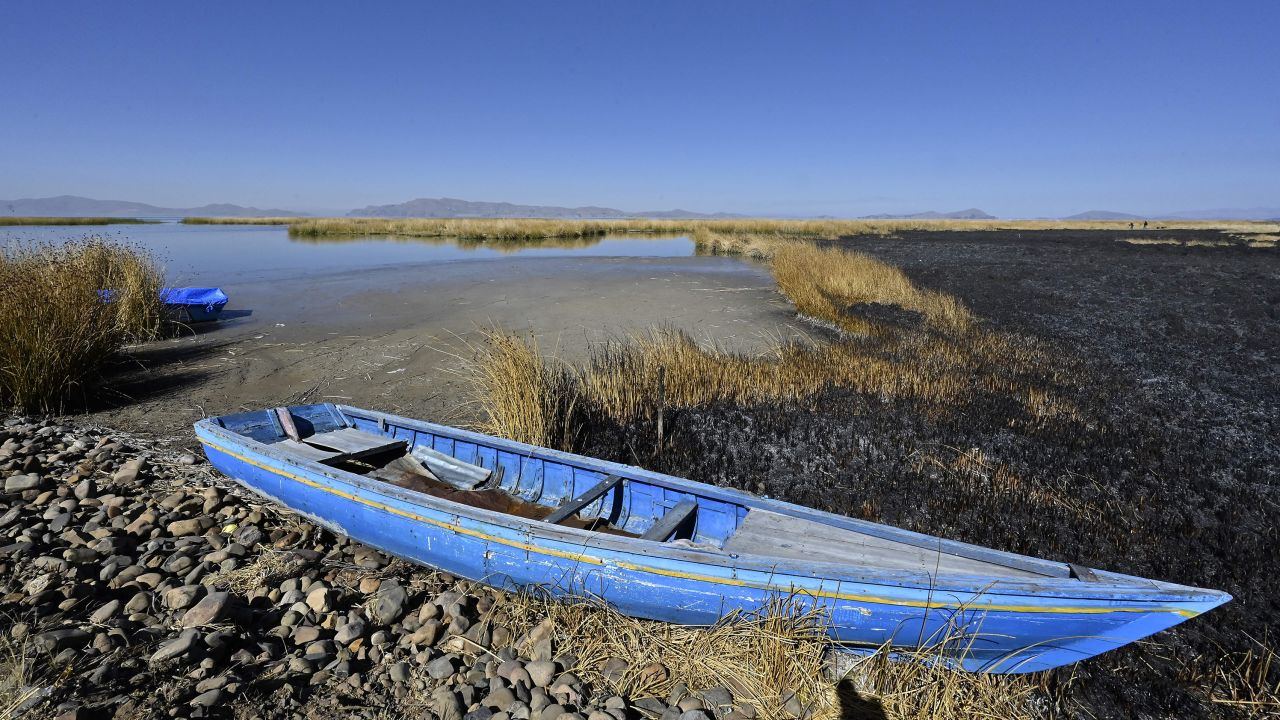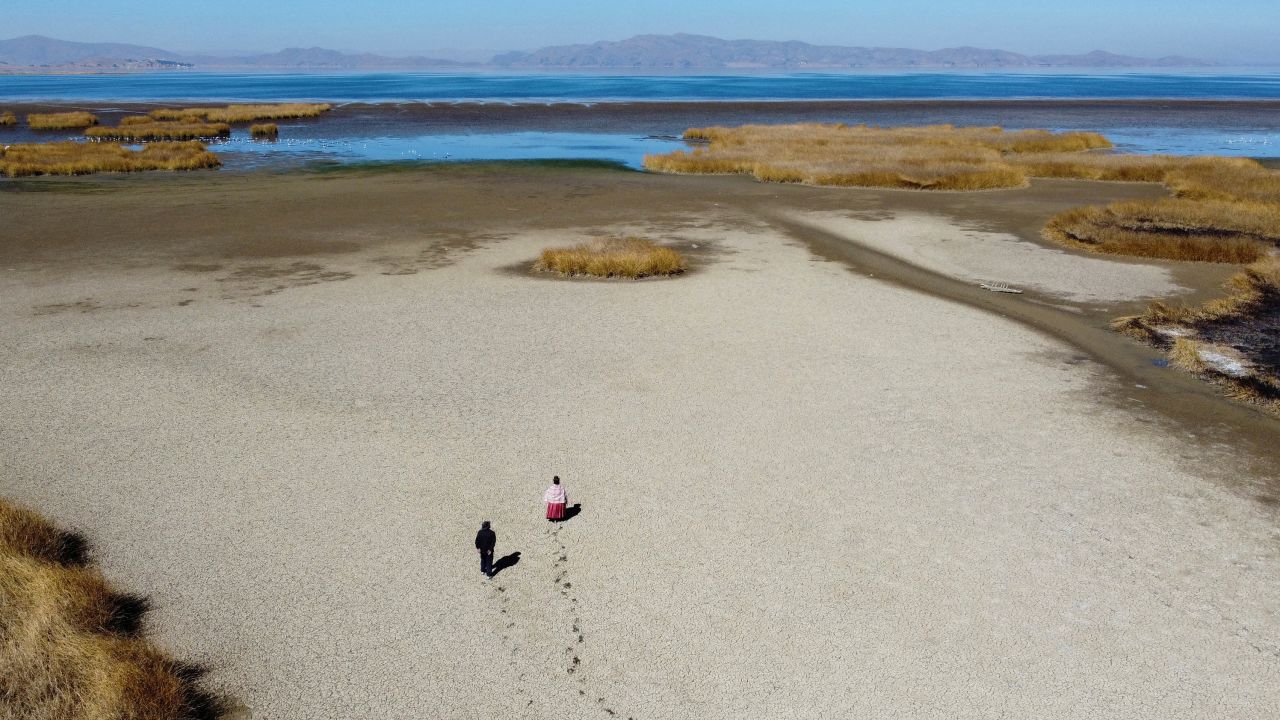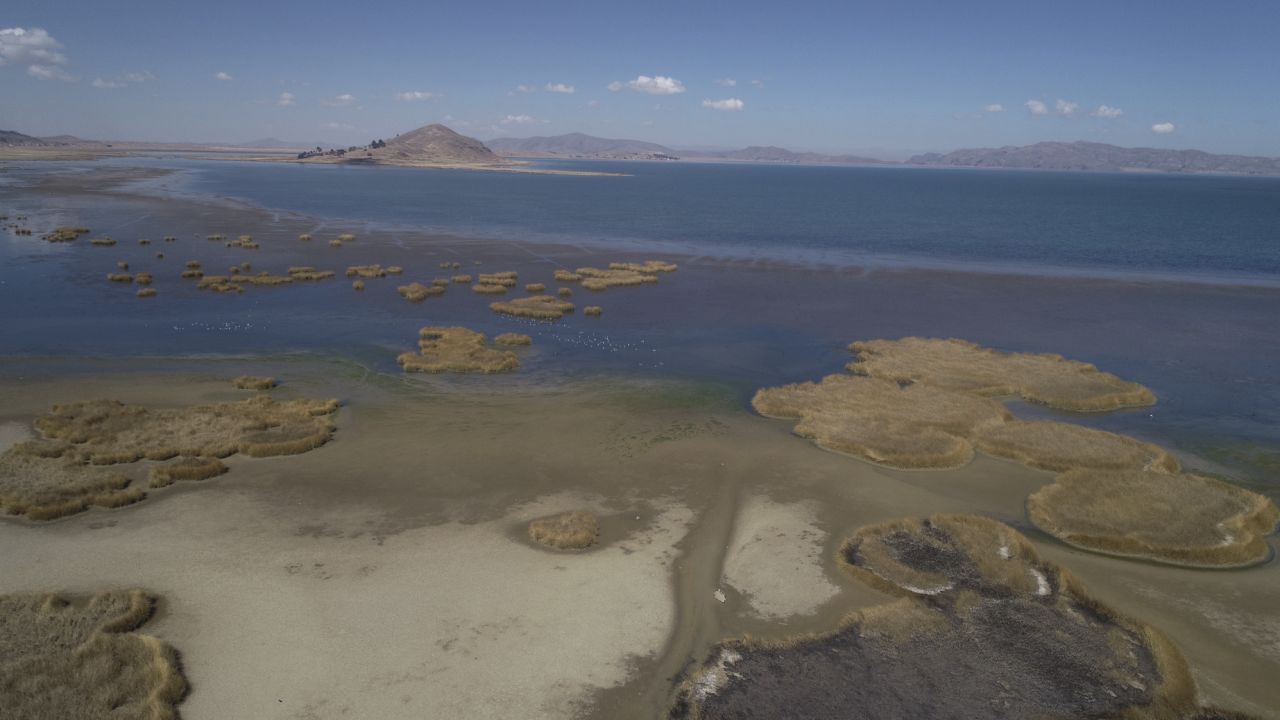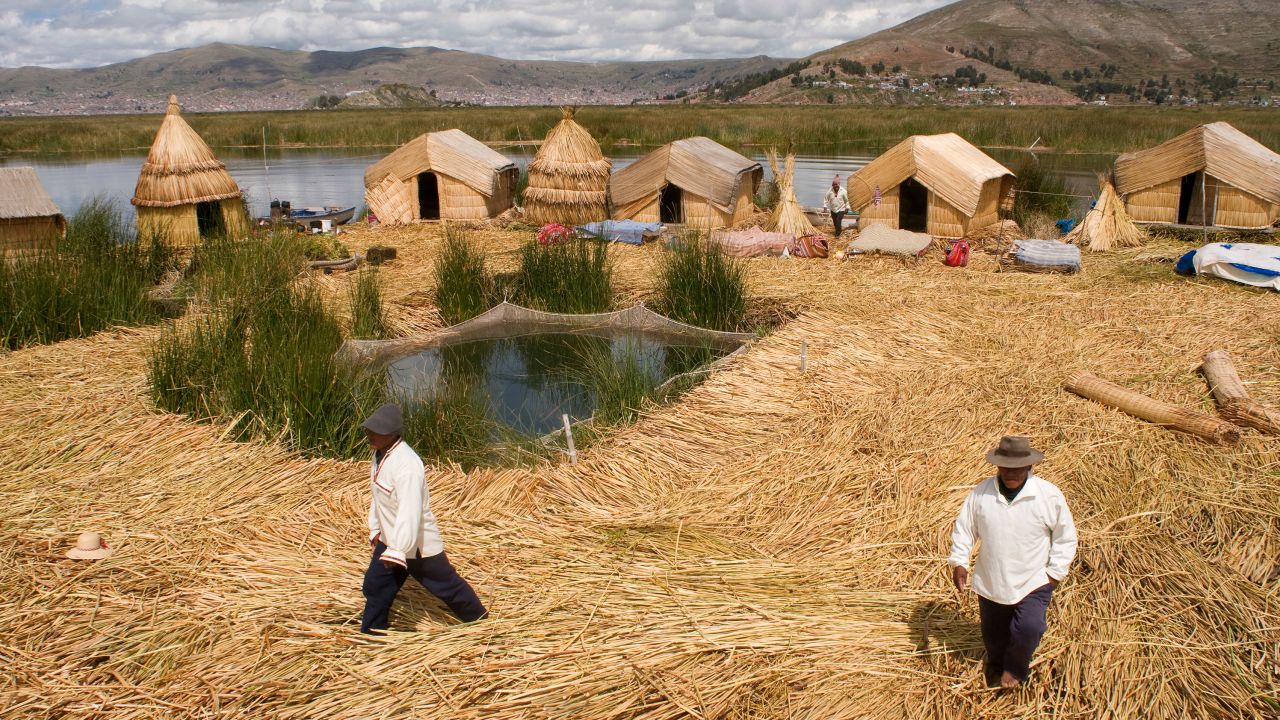CNN
—
The water level in Lake Titicaca – the highest navigable lake in the world and the largest in South America – is falling sharply after an unprecedented winter heatwave. This shocking decline affects tourism, fishing and agriculture, which local people depend on to earn a living.
“We don’t know what we will do between now and December because the water will keep decreasing,” said 63-year-old Nazario Charca, who lives on the lake and makes a living ferrying tourists around the lake’s waters.
Visitors have long been drawn to the blue waters and open skies of South America’s largest lake, which spans more than 3,200 square miles across the borders of Peru and Bolivia.
Sometimes described as an “inland sea”, it is home to indigenous Aymara, Quechua and Uros communities and lies at an altitude of approximately 3,800 meters (12,500 ft) in the Central Andes mountain range, making it the highest navigable lake in the world. The extreme altitude also exposes the lake to high levels of solar radiation, which enhances evaporation and accounts for most of its water loss.
More than three million people live around the lake, relying on its waters for fishing, agriculture and attracting tourists who boost the marginalized region’s economy.
Now the lake is in danger of losing some of that magic.
While it is known that water levels fluctuate every year, these changes are becoming more severe due to the climate crisis. A record winter heatwave has increased evaporation and lowered lake levels, according to CNN meteorologist Taylor Ward, exacerbating water shortages caused by the drought.
Sixto Flores, director of Peru’s National Meteorological and Hydrological Service (Senamhi) in Puno, told CNN that rainfall was 49% below average from August 2022 through March 2023, a period that includes the rainy season during which levels recover. Usually water.

Flores told CNN that by December, water levels would be headed toward the lowest level recorded since 1996 if the lake evaporates at the same usual rate in the next few months, which he called “very dangerous.”
This is part of a “gradual decline” in the lake’s water levels in recent years, Flores said, and a recent study that examined satellite images from 1992 to 2020 showed that Lake Titicaca is losing about 120 million metric tons of water annually. Which the authors say is primarily due to changes in precipitation and runoff.
Communities that depend on fishing are struggling as falling water levels compound a growing problem: declining fish stocks due to pollution and overfishing.
Agriculture has also been affected by the drought, with regional authorities reporting that crops suffered severely in the last harvest. The vast majority of quinoa and potato crops, both local staple crops, as well as oats used for livestock feed, have been affected.

The tourism economy was also hit after boats used to transport visitors around the lake became stranded as the waters receded.
“We are very worried more than anything else because the water levels are falling so much at the moment,” said Julian Huatamarca, 36, who sells locally made textiles to visitors to Takele Island.
“We want tourists to return, especially foreign tourists,” he said.
The Puno region, which covers the entire Peruvian side of Lake Titicaca, has long been known as a backward and marginalized region of the country.

Recently, the economy has been hit hard by the effects of the COVID-19 pandemic and a wave of social unrest. Bono became the center of demonstrations demanding the resignation of President Dina Boluarty, which built on anger generated by decades of inequality, allegations of corruption, and stagnant living standards.
Huatamarca told CNN that visitors did not travel to the area during the protests. “They were a little afraid to go,” he said.
Many people have left the area in recent years, especially during the pandemic, Huatamarca said.
“They had to, and they didn’t have enough money to buy basic necessities like food,” he said.

Recent history suggests that ongoing drought could push more people to leave their homes, with a previous drought in 1991 causing waves of migration as the subsistence economy collapsed due to food shortages.
For others, like Charka, the drought disrupts their way of life. Charka are part of the indigenous Uros group, who live on islands made of dried totora reeds that float on the lake. For centuries, the Uros have woven reeds on the islands, as well as using them to construct buildings and boats, but Charka worries that lower water levels mean there is less reed available.
“It will continue to affect us, there will be no more Totora waves, and the islands are deteriorating, and that is what worries us,” Charka told CNN.
Looking to the future, it is difficult to see a respite.
An El Niño is currently occurring, a natural phenomenon characterized by warmer than normal temperatures in the tropical Pacific Ocean that can dramatically change the weather over South America.
The warmer temperatures are expected to continue until at least February 2024, Grinia Avalos, deputy director of climatology at Sinamhi, told CNN.
“These conditions will contribute to lower rainfall levels in the Andean region,” she said.
Conor Baker, an analyst at the International Crisis Group, believes that the situation requires long-term measures to protect those who depend on the lake.
“While lake fluctuations have been linked to climate variability and natural variability, the worsening impact of climate change increases the need for sustainable management strategies,” he told CNN.
“Local communities that depend on the lake for their livelihood are particularly vulnerable, underscoring the urgent need to address the challenges posed by extreme fluctuations in water levels.”

“Lifelong food lover. Avid beeraholic. Zombie fanatic. Passionate travel practitioner.”
